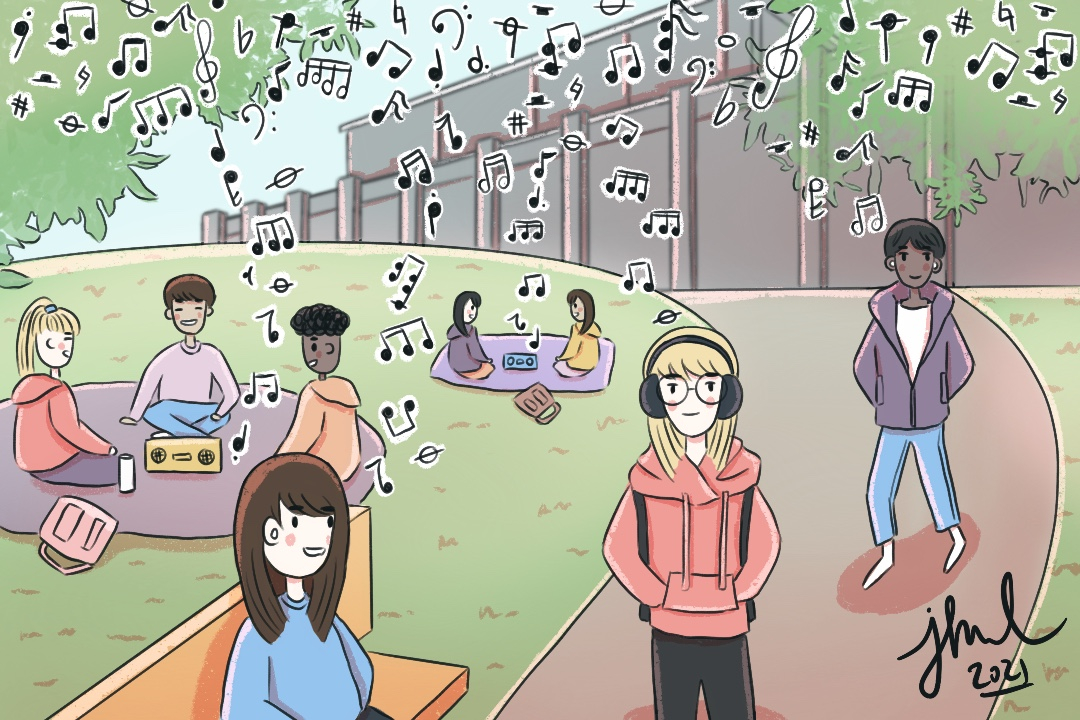Which genres, artists, and tracks flow through the headphones of the elusive U of T student? Apparently, many that I don’t recognize. As a self-proclaimed music fanatic and frequenter of the music-streaming service Spotify, I was curious to explore the listening habits of my fellow University of Toronto students.
“The Sound of University of Toronto” is a Spotify playlist by Everynoise.com — a site that creates playlists for universities and colleges around the world based on student listening habits. For U of T, the top five genres are Canadian hip hop, Toronto rap, Canadian contemporary R&B, trap soul, and alternative R&B.
Evidently, the support for Canadian artists is alive and well. The genre of ‘Canadian hip hop,’ for example, is heavily represented in the playlist, with heavy hitters like Drake and Tory Lanez both making an appearance.
Although some mainstream artists are featured, a large number of smaller, upcoming artists are spotlighted as well. For instance, RAJAN, Kylie V, and Young Smoke are Canadian-based artists, each with less than 50,000 monthly listeners on Spotify. Jagguar, who has less than 12,000 followers, is also featured.
This overwhelming support for independent artists holds the potential to propel them to widespread fame, in part thanks to the size and influence of U of T’s vast cohort.
Interestingly, the listening trends among other students in Toronto and throughout Ontario closely resemble those of U of T students. Canadian hip hop, for example, is the top genre among Ryerson University, York University, University of Waterloo, McMaster University, and University of Guelph students, to name a few.
Moving outside of Ontario, the patterns begin to shift. Students at the University of Calgary listen to “desi hip hop” and Simon Fraser University students are fans of “desi pop,” while “canadian indie” is the number one genre at the University of Alberta and Dalhousie University. At the University of Regina and the University of Windsor, “afro dancehall” and “afropop” are the respective favourites, and “contemporary canadian country” holds the top spot at the University of Saskatchewan.
It is surprising to learn that, outside of Canada, students at the Hochschule Mainz: University of Applied Sciences in Germany have the most similar music taste to U of T students, followed by Justus-Liebig-Universität Gießen in Germany and Högskolan i Halmstad University in Sweden.
Unsurprisingly, in addition to Canadian music, several international tracks are featured in “The Sound of University of Toronto,” including “Innoru Glassu,” a Tamil song by Pira, R Jay, and CK; “王八蛋” by Taiwanese artist David Tao; and “Haye Dil,” a Hindi track by Jimmy Khan. This speaks to the diversity of U of T, which included more than 23,000 international students from 159 different countries and regions in the cohort of fall 2019–2020.
This playlist exemplifies just how powerful multiculturalism is in defining U of T’s culture. Through its combination of Canadian pride and international sway, U of T’s musical repertoire stands unique among global student cohorts.


